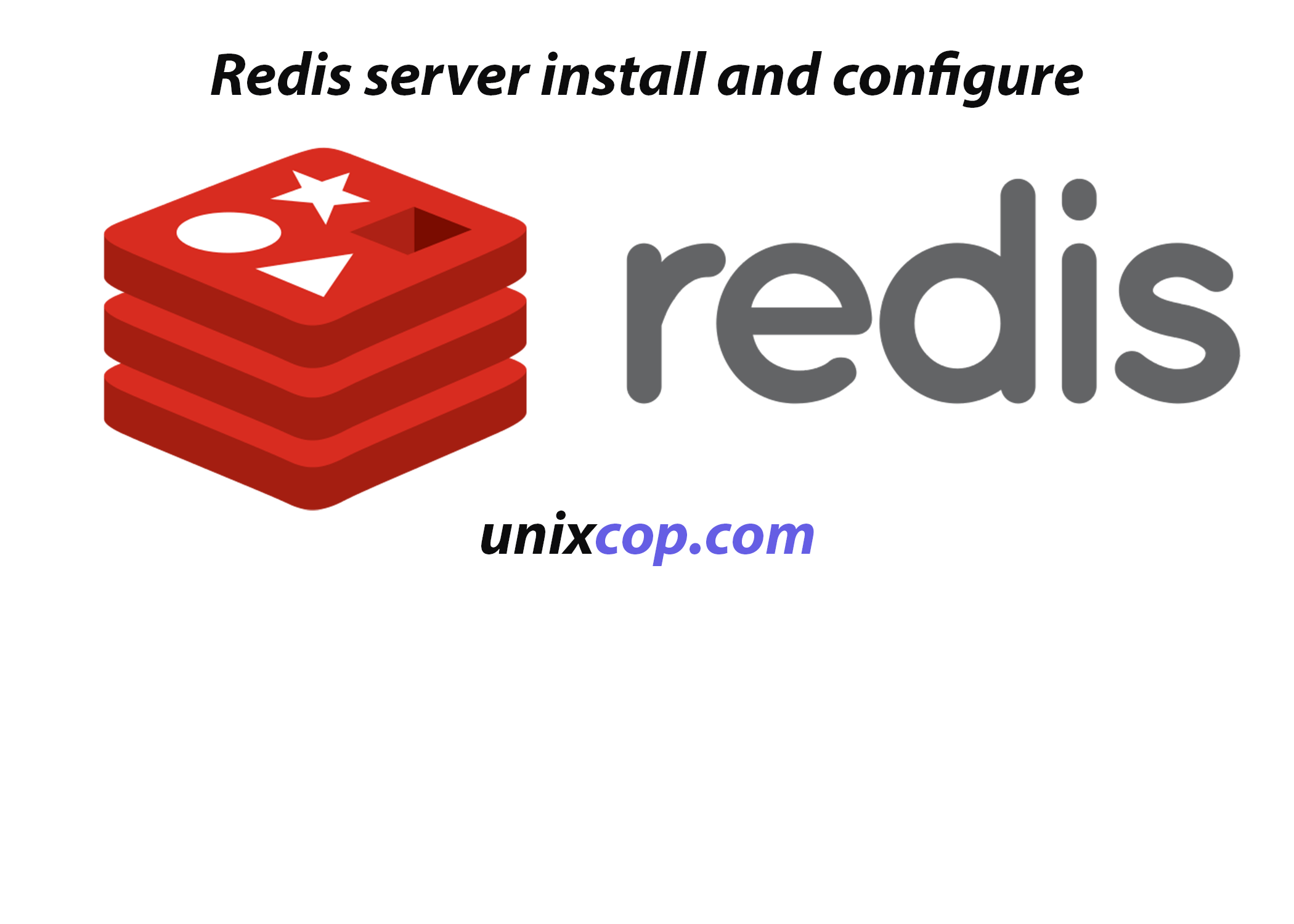Introduction
Redis server is an open-source (BSD licensed), in-memory data structure store used as a database, cache, and message broker. Gives data structures as strings, hashes, lists, sets, sorted sets, including range queries, bitmaps, hyperloglogs, geospatial indexes, and streams. In addition to, Redis has built-in replication, Lua scripting, LRU eviction, transactions, and different levels of on-disk persistence and provides tremendous availability via Redis Sentinel and automated partitioning with Redis Cluster.
Also Written in C and works in most POSIX like Linux, *BSD, and OS X, without dependencies.Linux and OS X are mostly the operating systems that Redis was developed and tested. Also I would recommend using Linux for deployment. So Redis may work in the Solaris systems.There is no official statement that supports Windows builds.
Installing required packages
- firstly, Install Epel repository to obtain the redis package required
[root@unixcop ~]# dnf install epel-release -y
Last metadata expiration check: 0:04:26 ago on Fri 13 Aug 2021 02:51:22 PM UTC.
Dependencies resolved.
========================================================================================================
Package Architecture Version Repository Size
========================================================================================================
Installing:
epel-release noarch 8-11.el8 extras 24 k
Transaction Summary
========================================================================================================
Install 1 Package
Total download size: 24 k
Installed size: 35 k
Downloading Packages:
epel-release-8-11.el8.noarch.rpm 40 kB/s | 24 kB 00:00
--------------------------------------------------------------------------------------------------------
Total 7.1 kB/s | 24 kB 00:03
Running transaction check
Transaction check succeeded.
Running transaction test
Transaction test succeeded.
Running transaction
Preparing : 1/1
Installing : epel-release-8-11.el8.noarch 1/1
Running scriptlet: epel-release-8-11.el8.noarch 1/1
Verifying : epel-release-8-11.el8.noarch 1/1
Installed:
epel-release-8-11.el8.noarch
Complete!
[root@unixcop ~]#
2. Install Redis package
[root@unixcop ~]# dnf install redis -y
Extra Packages for Enterprise Linux Modular 8 - x86_64 176 kB/s | 927 kB 00:05
Extra Packages for Enterprise Linux 8 - x86_64 4.3 MB/s | 10 MB 00:02
Last metadata expiration check: 0:00:03 ago on Fri 13 Aug 2021 02:57:53 PM UTC.
Dependencies resolved.
========================================================================================================
Package Architecture Version Repository Size
========================================================================================================
Installing:
redis x86_64 5.0.3-2.module_el8.2.0+318+3d7e67ea appstream 925 k
Enabling module streams:
redis 5
Transaction Summary
========================================================================================================
Install 1 Package
Total download size: 925 k
Installed size: 3.2 M
Downloading Packages:
redis-5.0.3-2.module_el8.2.0+318+3d7e67ea.x86_64.rpm 978 kB/s | 925 kB 00:00
--------------------------------------------------------------------------------------------------------
Total 503 kB/s | 925 kB 00:01
Running transaction check
Transaction check succeeded.
Running transaction test
Transaction test succeeded.
Running transaction
Preparing : 1/1
Running scriptlet: redis-5.0.3-2.module_el8.2.0+318+3d7e67ea.x86_64 1/1
Installing : redis-5.0.3-2.module_el8.2.0+318+3d7e67ea.x86_64 1/1
Running scriptlet: redis-5.0.3-2.module_el8.2.0+318+3d7e67ea.x86_64 1/1
Verifying : redis-5.0.3-2.module_el8.2.0+318+3d7e67ea.x86_64 1/1
Installed:
redis-5.0.3-2.module_el8.2.0+318+3d7e67ea.x86_64
Complete!
[root@unixcop ~]#
3. So Start Redis daemon after successful installation
[root@unixcop ~]# systemctl start redis
[root@unixcop ~]# systemctl enable redis
Created symlink /etc/systemd/system/multi-user.target.wants/redis.service → /usr/lib/systemd/system/redi
s.service.
[root@unixcop ~]#
4. Configure Redis server for remote access
vi /etc/redis.conf
46 ################################## NETWORK #####################################
47
48 # By default, if no "bind" configuration directive is specified, Redis listens
49 # for connections from all the network interfaces available on the server.
50 # It is possible to listen to just one or multiple selected interfaces using
51 # the "bind" configuration directive, followed by one or more IP addresses.
52 #
53 # Examples:
54 #
55 bind 127.0.0.1 192.168.56.102
5. Also Configure Redis password to secure connection.Can make a more secure password.If you haven’t set up a password yet, instructions in this section show how to set the database server password.
Now generate a password.
[root@unixcop ~]# echo "unixcop.com" | sha256sum
3d6b487de4c43d829f2817c4156d6f32790189d8e27640f6927b5e3da8997883 -
[root@unixcop ~]#
6. Add the generated password to the Redis configuration
vi /etc/redis.conf
################################## SECURITY ###################################
# Require clients to issue AUTH <PASSWORD> before processing any other
# commands. This might be useful in environments in which you do not trust
# others with access to the host running redis-server.
#
# This should stay commented out for backward compatibility and because most
# people do not need auth (e.g. they run their own servers).
#
# Warning: since Redis is pretty fast an outside user can try up to
# 150k passwords per second against a good box. This means that you should
# use a very strong password otherwise it will be very easy to break.
#
# requirepass foobared
requirepass 3d6b487de4c43d829f2817c4156d6f32790189d8e27640f6927b5e3da8997883
7. Restart Redis server services
systemctl restart redis
8. Now validate connection using radis-cli. Error seen below is normal
[root@unixcop ~]# redis-cli -h 192.168.56.192 ping
(error) NOAUTH Authentication required.
9. Now try command authenticates with the password specified in the Redis configuration file.
[root@unixcop ~]# redis-cli
127.0.0.1:6379> auth 3d6b487de4c43d829f2817c4156d6f32790189d8e27640f6927b5e3da8997883
OK
127.0.0.1:6379> config get requirepass
1) "requirepass"
2) "3d6b487de4c43d829f2817c4156d6f32790189d8e27640f6927b5e3da8997883"
127.0.0.1:6379>
6. Also Check if the Redis port is listening
[root@unixcop ~]# netstat -an|grep 6379
tcp 0 0 192.168.56.192:6379 0.0.0.0:* LISTEN
tcp 0 0 127.0.0.1:6379 0.0.0.0:* LISTEN
[root@unixcop ~]#
7. In addition to, Validate if everything is set up properly, you can try to ping the Redis from your remote machine using the redis-cli utility which provides a command-line interface to a Redis:
[root@unixcop ~]# redis-cli -h 192.168.56.192 ping
PONG
[root@unixcop ~]#
Conclusion Redis server
So To learn more about how to use Redis, visit their official documentation page. Also Try PostgreSQL.Please feel free to comment about this tutorial.



